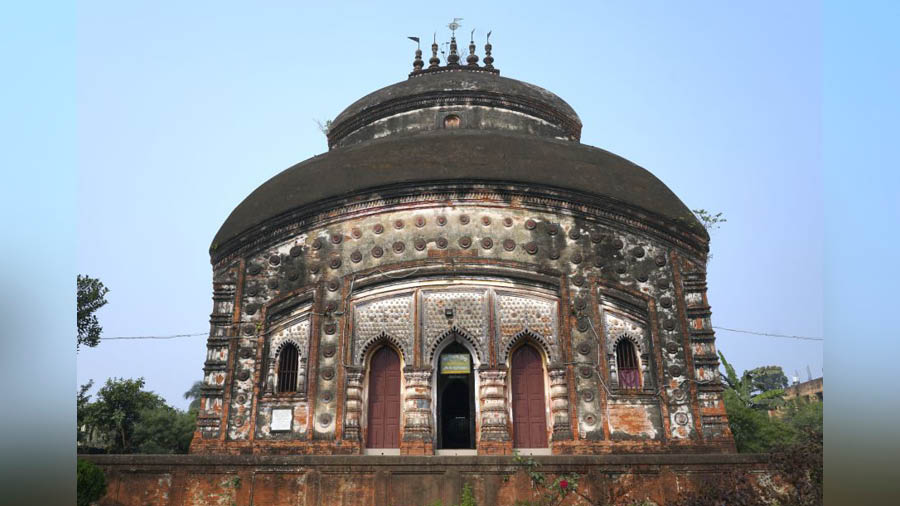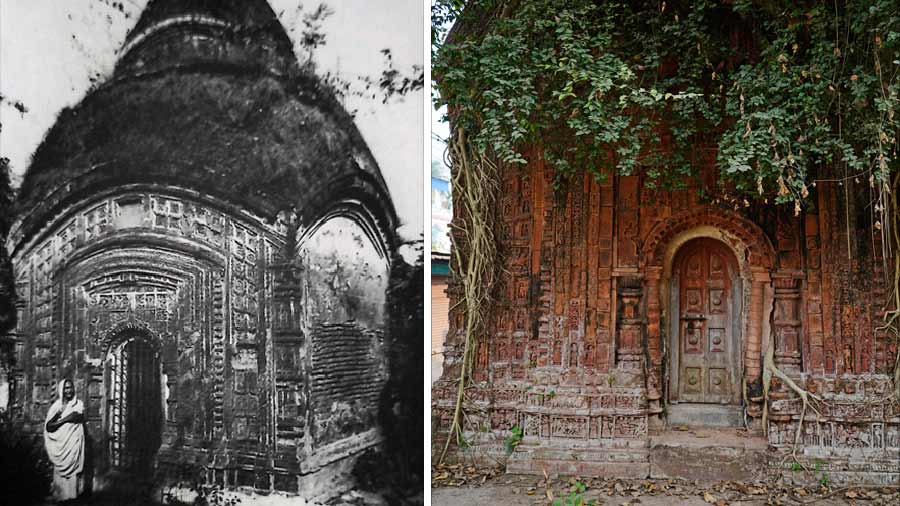Kanchrapara, or Kanchanpalli, is a planned township located in North 24 Parganas district of West Bengal. It was once an unfit place to live in and during the Mughal period, many people were sent there in exile. Out of the first few people to be exiled there were one Ahmed Beg, and later a gentleman named Mallik Barkhorder, who was one the first people to develop this area and surroundings into a prosperous place with beautiful gardens. Later, in 1862, the Sealdah-Kushtia Broad Gauge Railway line came up. A locomotive workshop and railway station were built in following years. A planned railway township was built. Kanchrapara Municipality was separated out of the Halisahar Municipality in 1917.
If you are coming from Kolkata directly, you can board a train from Sealdah and reach Kanchrapara in just over one hour. Alternatively, if you are coming to Kanchrapara as an extension of your tour at Halishahar, hop on to bus No. 85 and drive through the road beside the river to reach Milan Nagar bus stop after crossing the Bag more. Your first stop to look out for built heritages starts from here, as you walk near Adarsha Sangha playground, behind which stands an age-old ruined mosque covered with vegetation and encroached by a slum.

Exterior of Bager Mosque with its remaining terracotta panels Tathagata Sen
Locally known as Bager Masjid, the 1686-built brick mosque has some terracotta panels still existing on its back wall. As per information provided by the municipality, the area around the mosque was known as 'Malliker Bag'. The name probably comes from Malek Barkhordar, who was also known as “Mallik Saheb”, who erected this mosque as many respectable Muslim families settled here and they were in need of a place to pray.
In his article on Bager Mosque, published in Rupshali magazine (January 2023), heritage researcher Tathagata Sen mentions that Bag probably means the garden that existed here. There are also theories that the name ‘Bager mosque’ and similar names in the locality like ‘Bager More’ or ‘Bager Khal’ might have come from Ahmed Beg. The mosque is one of the oldest standing built heritages of Kanchrapara that sadly has seen no renovation from any authorities. The original foundation stone is on display at Kanchrapara Municipality Museum.
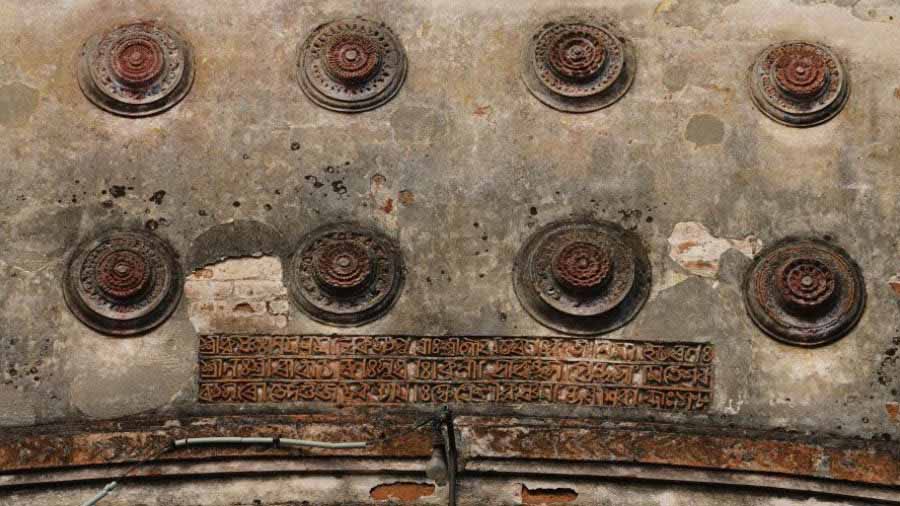
The old foundation stone of the Krishna Rai Jiu temple Amitabha Gupta
Tracing back to Bag More, one has to reach Rathtala bus stop, around 700 metres in the north. This area falls under Kalyani Municipality. Adjacent to the bus stop is the aatchala-styled Krishna Rai Jiu Temple. The contemporary gate to the complex is small in size, but the 1785 built Krishna Rai Jiu is a colossal structure. This is one of the most prominent brick temples of North 24 Parganas district. The aatchala temple with porch on triple archway was established in 1785 by brothers Nimai Charan Mallick and Gour Charan Mallick. The earlier temple was in a ruinous state when the Mallick brothers visited it.

The new foundation stone of Krishna Rai Jiu temple Amitabha Gupta
The original three-lined foundation stone is atop the triple-arched entrance of the temple, flanked by several terracotta lotus motifs. On the left wall beside the entrance is engraved a marble plaque giving detailed information about the temple. The temple has only terracotta lotus motifs spread over the front wall. There are five small terracotta ‘Purna Kumbha’ motifs on the top of the roof, which itself is a unique style. The Krishna Rai deity is made of touchstone and the Radhika is made of ashtadhatu. The deities belong to Srinath Pandit, the guru of 16th-century Indian Bengali poet Kavi Karnapura, who was the son of Sivananda Sen, an eminent follower of Shri Chaitanya Mahaprabhu.
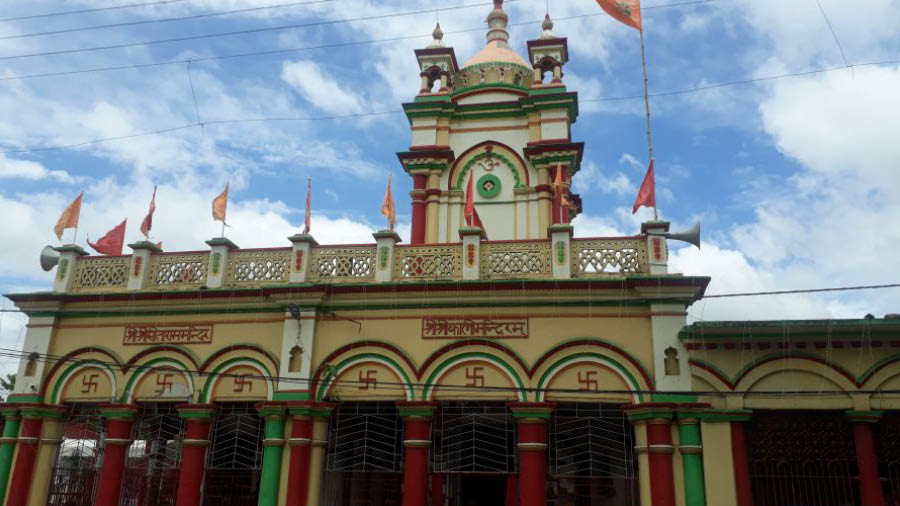
The Dakat-e-Kali temple of Kanchrapara Wikimedia Commons, Pinakpani
Another age-old temple of Kanchrapara is the Dakat-e-Kali Temple. In West Bengal, almost every rural township has a Kali temple that was once worshipped by the dacoits. Located near the Railway Pond, the flat-roofed temple with a tower on top has been renovated in recent times. The premises also houses a Ram-Sita temple.
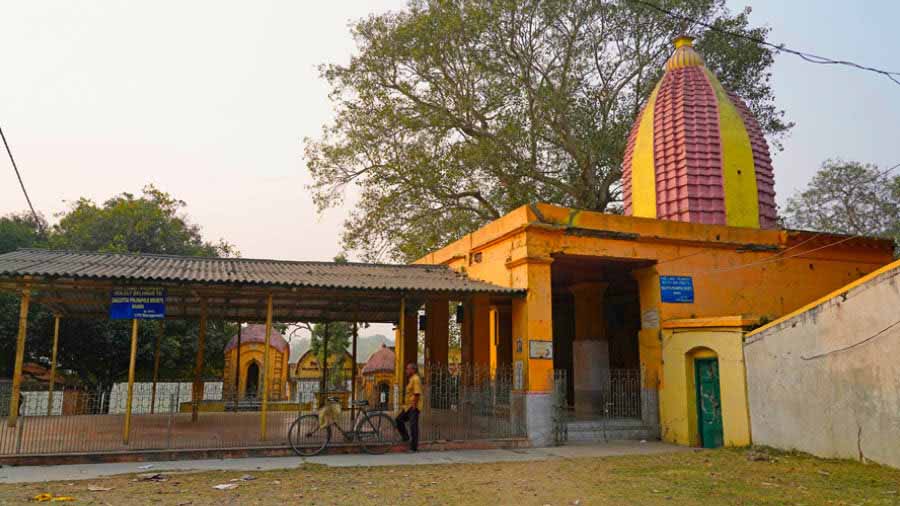
The Aparadh Bhanjan Temple complex at Kulia in Nadia district Amitabha Gupta
At Kulia, 5km north-west of Kanchrapara rail station, stands the Aparadh Bhanjan temple premises on the banks of Gayeshpur Kulia pond. Kulia is included under Nadia district. The temple complex is also known by the name Kulia Pat.
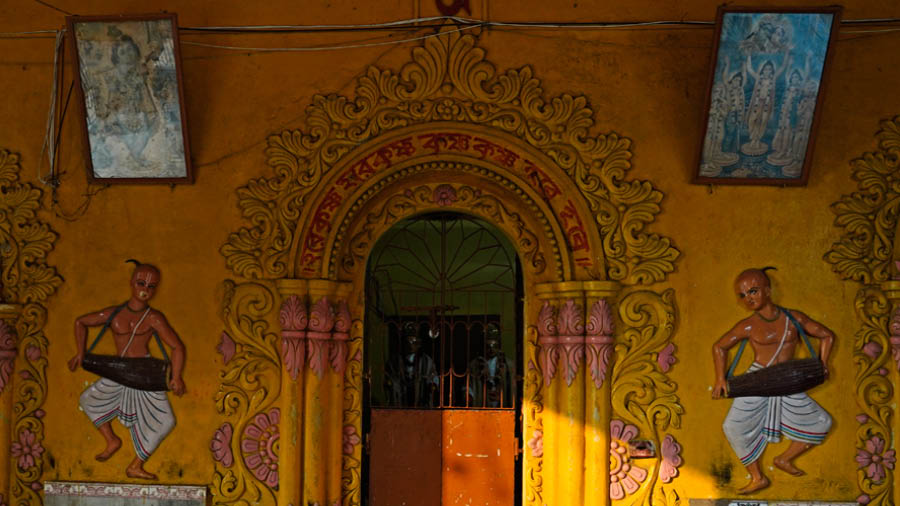
Interiors of the Aparadh Bhanjan Temple complex at Kulia Amitabha Gupta
If you are wondering why the temple is so peculiarly named (Aparadh Bhanjan literally means “forgiving a sin”), there is a story behind it. It so happened that during one Krishna Chaturdashi tithi (14th day from the new moon) in Bengali Agrahyan month, Chaitanya Mahaprabhu appeared here to forgive the aparadh (sin) of one Devananda Swami, who was initially against the Vaishnav religion. In this same spot, he also forgave the aparadh of a brahmin named Chapal Gopal, who has been consistently disturbing Chaitanya during his prayers. It is said that both had suffered from leprosy and as the story goes that after Chaitanya forgave them, they were cured.
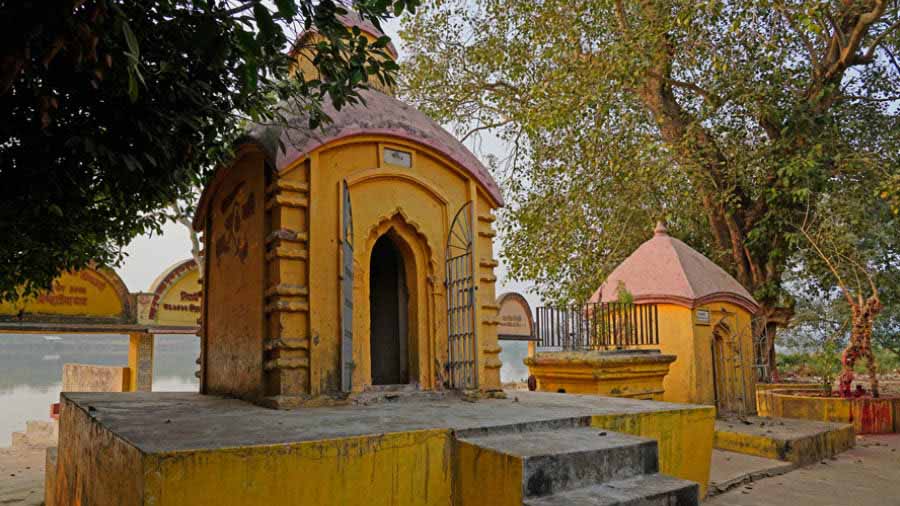
Samadhi temple of Devananda Swami and Chapal Gopal inside Aparadh Bhanjan Temple complex Amitabha Gupta
The temple was originally built by a devotee named Gourcharan Mallick. Later, another devotee named Kanailal Dhar built the Nat Mandir, Samadhi temple of Devananda Swami and Chapal Gopal. There are bathing ghats on the bank of the pond. The premises are maintained by “Kolkata Pinjrapole Society”.
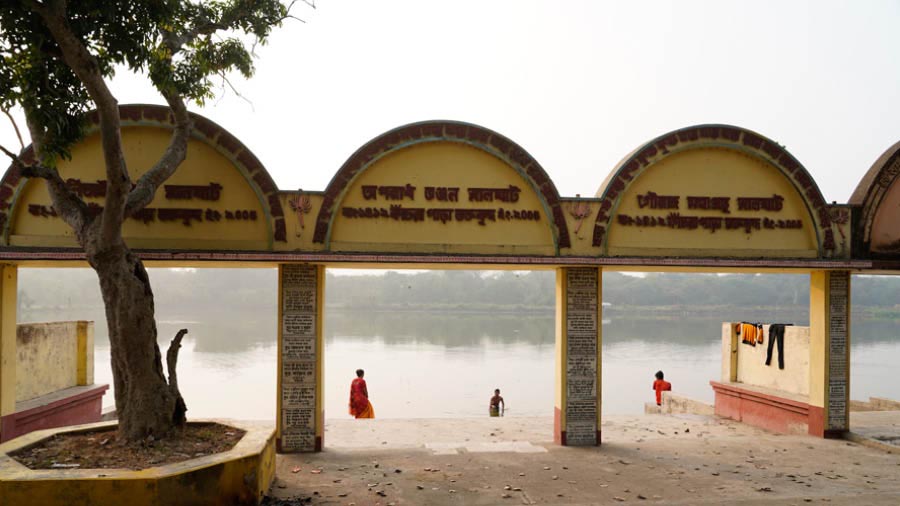
Aparadh Bhanjan Ghat on the banks of Gayeshpur Kulia pond Amitabha Gupta
Relax a bit sitting on the ghat enjoying the peaceful and serene atmosphere before heading back home.
